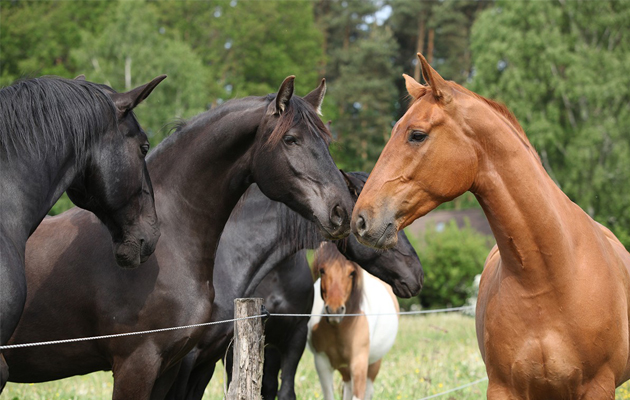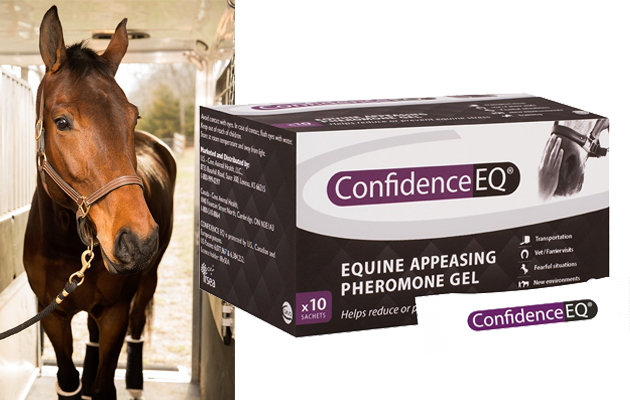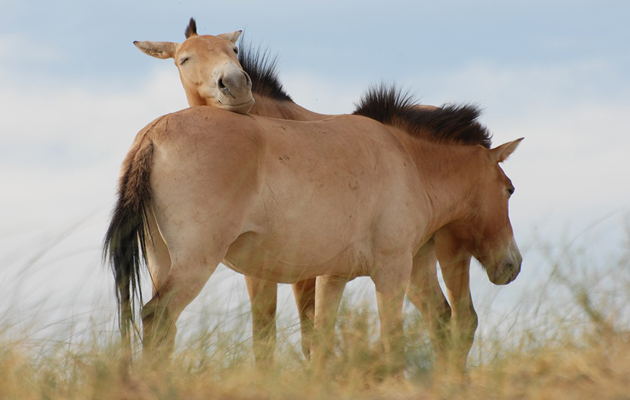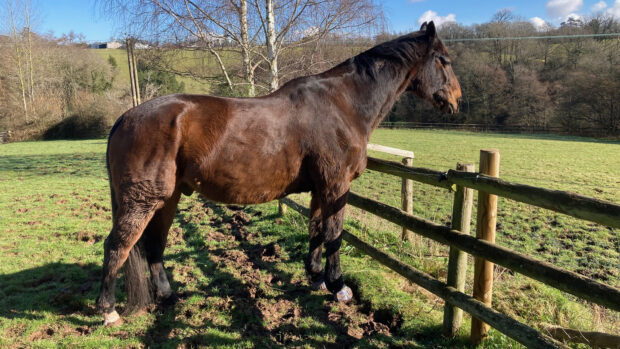Advertisement Feature
In the wild
As a prey species, in the wild the ability to communicate effectively within the herd could literally mean the difference between life and death. Although this is not often the case for our domesticated horses they do remain highly sensitive to their environment and surroundings.
Equine communication
Horses will use not only their posture and body language to communicate but also their senses. With large eyes positioned on the side of their heads they have wide panoramic vision and can see over a good distance while also rapidly picking up small movements. Horses are well equipped to hear faint noises, being able to respond to sounds up to 4,400 metres away.
They have an increased number of touch receptors over their neck and withers evident when mutually grooming, a comfort behaviour which helps reduce social tension.
In addition to smelling and sniffing when greeting, horses use their nostrils to take in pheromones (a chemical message produced by the horse). Equine pheromones can be secreted through sweat glands, sebaceous glands and in their urine and are detected by the vomero-nasal organ (located in the front of the head). To help the pheromone reach this organ, horses may perform a special movement called the Flehmen response.
Most animal species produce a variety of pheromones which convey different information including; to signal an alarm, give information about the sexual cycle or to provide reassurance. This information triggers specific behaviours in animals of the same species.
Motherhood
Nursing mares, like many mammalian species, naturally produce an appeasing pheromone, which provides reassurance to their new foal. This pheromone helps to allow the foal to feel safe, secure and more confident when encountering new situations and unknown environments helping them learn about the world around them.
The dog appeasing pheromone (commercially available as Adaptil®, Ceva Animal Health) has been widely and successfully used since 2002. Since equine appeasing pheromone was identified, numerous studies have been conducted confirming its efficacy in controlling stress in commonly encountered situations in horses of all ages.
What is Confidence EQ
Confidence EQ is an exact copy of this equine appeasing pheromone. In adult horses, its presence is a signal that the environment is safe and secure which can help with learning.
Horses are adapted to react in order to survive so although it is normal for a horse to react to something it is fearful of, it’s not always helpful or safe for us as riders and handlers when this happens. Rearing when the clippers are turned on or when trying to load a horse onto a trailer are perhaps understandable but can be extremely dangerous. Fear can be managed by working with horses to help them cope with situations they find worrying which is where using Confidence EQ can help.
The ideal time to use Confidence EQ is when you anticipate your horse will be exposed to something new which they may find stressful, alongside appropriate training. For example, helping a horse learn how to load calmly and safely leaving them with a positive experience for the future.
If a problem has already been established then Confidence EQ can be helpful in resolving it, alongside appropriate behavioural therapy. Confidence EQ can be used to help build confidence in a variety of situations such as; loading, travelling and recovery after arrival, environmental changes (moving to a new yard, turnout or stabling, new owner or groom), training events (introducing new exercises), social situations (foal weaning, meeting new horses), farrier, vet or dental visits and dealing with loud noises (large crowds, thunderstorms, fireworks, gunshots, motor vehicles).
Confidence EQ helps horses use their own skills to cope with their surroundings. Additionally ConfidenceEQ has 6 published papers showing efficacy and great product reviews.
ConfidenceEQ® and the Przewalski’s horse’s
An extreme example of where the equine appeasing pheromone has been used is during the transportation of Asian Wild Horses (Przewalski’s Horse’s) from France to Mongolia.
This ancient breed of horse has become endangered due to hunting resulting in the need for conservation projects to be set up to preserve the breed. Once fully prepared to go back into the wild, the horses faced an epic and stressful journey from where they were reared in France.
As you can imagine the stress from such a journey was immense, leaving the horses bewildered and exhausted on arrival, which in turn left them vulnerable to natural predators. The use of sedatives to help them travel contributed to these horses being less able to bond as a herd and adapt to their new environment immediately on arrival.
The programme then introduced the use of equine appeasing pheromone (ConfidenceEQ) strategically throughout the journey. The horses arrived less stressed and better able to adapt and resume the herd behaviour so essential for their survival.
Find out more visit www.confidenceequine.com/uk or like us on Facebook Confidence EQ for Horses.








